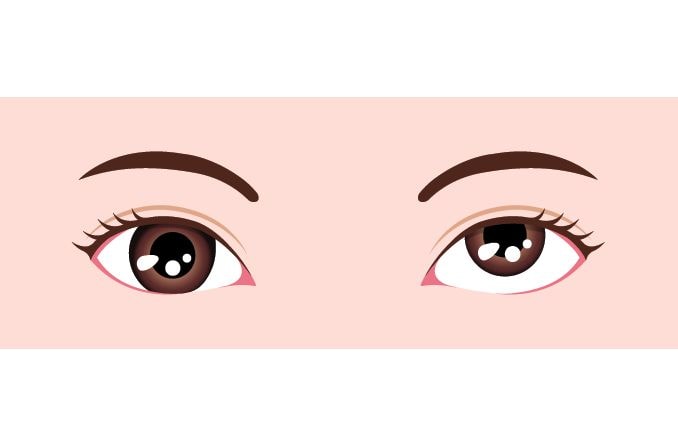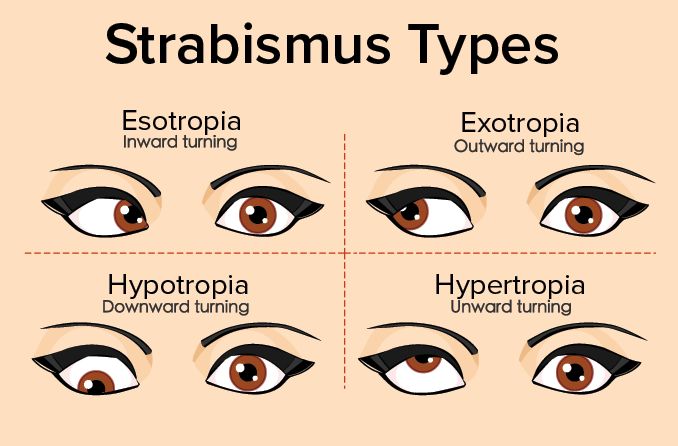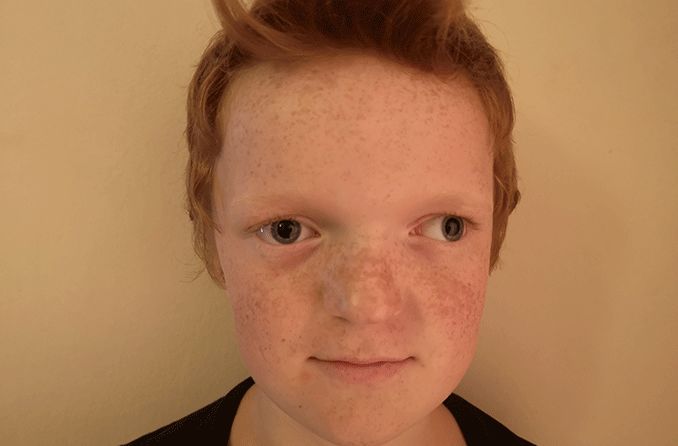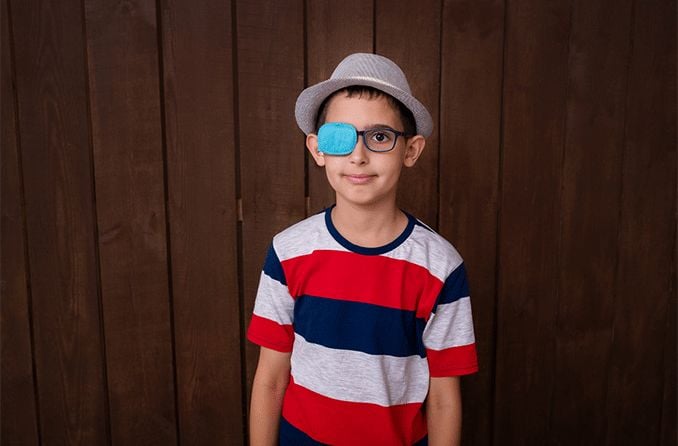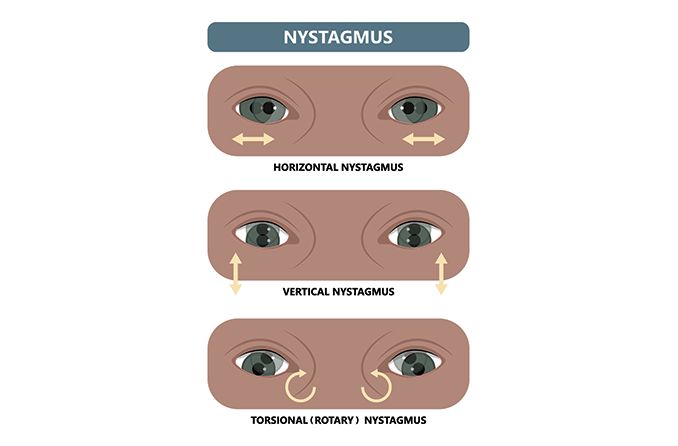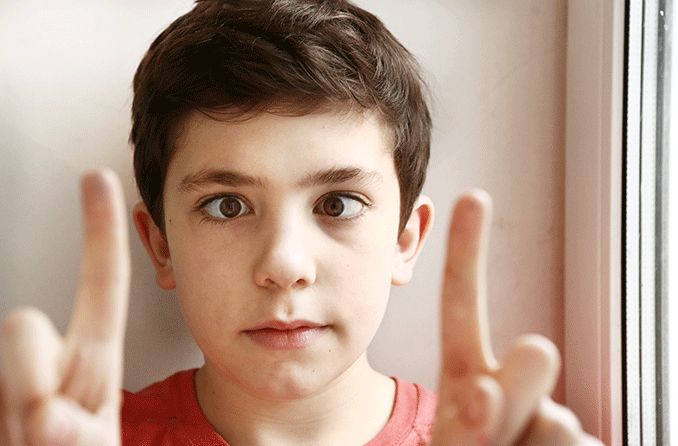What is hypertropia?
Hypertropia is a form of vertical strabismus where one eye is deviated higher than the other. It is a result of muscle imbalance resulting from a malfunction of an ocular nerve or muscle. It can occur at birth or later in life from disease and injury.
Strabismus (tropia) is a condition in which the eyes are not focused in the same direction. One eye is turned in a different direction so that they don't line up.
There are three main types of strabismus (tropias):
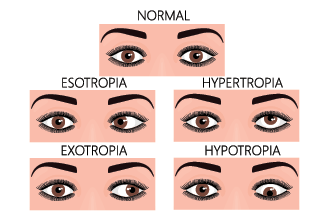
Esotropia – one or both eyes turn toward the nose (most common)
Exotropia – one or both eyes turn outward
Hypertropia – one eye is deviated higher than the other (least common)
When the hypertropic eye looks straight ahead, the other eye becomes hypo tropic (drifts downward). Because of this relationship, eye doctors define vertical strabismus by the eye that is hypertropic, or drifts upward.
About 3% to 5% of the population has misaligned eyes, and about 2% of children have a tropia. Hypertropia is the least common of these tropias.
What are symptoms of hypertropia?
In hypertropia, the eye switches between looking straight ahead and deviating upward. This is because the eyes are not working as a team to focus on one object. The result is that the brain receives two different images, causing double vision.
Some additional symptoms of hypertropia include:
Visible eye misalignment, with one eye drifting upward
A head tilt to try to correct the double vision
Repeated blinking or squinting
Headaches and eye strain
Poor depth perception
How is hypertropia classified?
Constant or intermittent
If the hypertropia is always present, it is classified as constant hypertropia. If the hypertropia is present only when a person is feeling tired or has some weakness, it is classified as an intermittent hypertropia.
Comitant or incomitant
When looking in different directions, the amount that the eye deviates can change. If the amount of eye deviation is the same in all directions of the gaze, it is called a comitant hypertropia. When the amount changes depending on the direction that a person is looking, it is called an incomitant hypertropia.
What causes hypertropia?
Hypertropia is a result of an imbalance of the extraocular muscles that control eye movement. While some may be born with hypertropia (congenital), some develop it due to disease or injury. Conditions that can result in hypertropia include:
Graves’ disease – A disease in which the thyroid gland produces too much thyroid hormone. This disease can cause the muscle that helps to move the eye downward (inferior rectus) to become scarred and restricted. The inferior rectus cannot function properly anymore, resulting in the eye drifting upward. This is typically a disease of adulthood.
Fourth cranial nerve palsy – A palsy is a lack of nerve function, resulting in weakness or full paralysis of the muscle it serves. The fourth cranial nerve (trochlear nerve) helps to innervate the superior oblique muscle. This muscle helps to move the eye down and in. Due to injury, disease or congenital causes, a palsy of this nerve will result in the eye drifting upward because the superior oblique muscle is weak or paralyzed. This is usually diagnosed in infancy.
Stroke or other neurological conditions – The nerves to the muscles that are responsible for vertical eye movement can become damaged. This can be caused by a stroke or other diseases of the nervous system. Usually, hypertropia due to stroke or a neurological disease occurs in adults.
Trauma – An injury that results in nerve or muscle damage or inflammation can temporarily or permanently result in a hypertropia. Sometimes this resolves on its own, but it may require medical or surgical intervention.
Brown syndrome – This is a rare condition that causes the eye to not move properly. It is one of the causes of childhood hypertropia.
Duane syndrome – This is a rare disorder of the lateral rectus muscle that restricts movement outward and upward. It is one of the causes of childhood hypertropia.
How is hypertropia diagnosed?
When you go to an eye doctor for a diagnosis, you will be asked questions such as when the hypertropia was first noticed and if there is a family history. Studies have shown that there is a higher prevalence of strabismus in those with a family history of it. A full ocular health exam as well as a refraction will be done.
Finally, tests that examine the alignment of the eyes will be performed. These tests will help to determine whether the hypertropia is constant or intermittent. They will also determine whether it is comitant or incomitant by testing the degree of eye drift in different gazes.
Another differentiation that the eye doctor will make is whether the eye drift is a hypertropia or a hyperphoria.
Hypertropia – A manifest misalignment resulting in one eye drifting upward. It is usually manifest (present) even under binocular conditions.
Hyperphoria – A latent misalignment resulting in one eye drifting upward. This means that the eyes work together and align when both eyes are focused on a single object and binocular vision is present. The eye drift is usually only present when a person is tired, which is why it is “latent.”
It can be confusing to understand the difference between a hyperphoria and an intermittent hypertropia. Unlike a hyperphoria, a hypertropia will spontaneously become visible and apparent, even under binocular conditions. In some cases, a phoria can progress to an intermittent tropia.
SEE RELATED: Esophoria and Exophoria
What are the risks to infants and young children with hypertropia?
Although newborns sometimes look like their eyes are drifting, their eyes will usually align by about 3 months. If a hypertropia is present and not treated in a young child, the child may develop amblyopia (“lazy eye”). This can result in long-term visual problems such as poor acuity and depth perception.
A muscle imbalance such as strabismus is usually present by age 3. A child may not complain of double vision or other symptoms because they do not know better. Children with binocular vision problems may show signs such as tilting their head to minimize double vision, blinking to clear up the image or difficulty with depth perception. It is important to watch for these signs so that a child with hypertropia can be treated early.
What is the treatment and management for hypertropia?
Depending on the age of the individual and the cause of the hypertropia, treatment options include:
Glasses – Refractive error will be corrected, and prism may be placed in glasses to provide a single image for the brain from both eyes.
Patching – The stronger eye will be covered so that vision in the weaker eye can be improved.
Surgery – Muscle misalignment may be surgically corrected.
An eye doctor can perform a thorough exam to diagnose hypertropia and provide treatment options. Symptoms of hypertropia can be managed with a team of skilled eye care professionals. A new or sudden development of hypertropia could indicate a serious condition. If this occurs, contact a doctor immediately.
